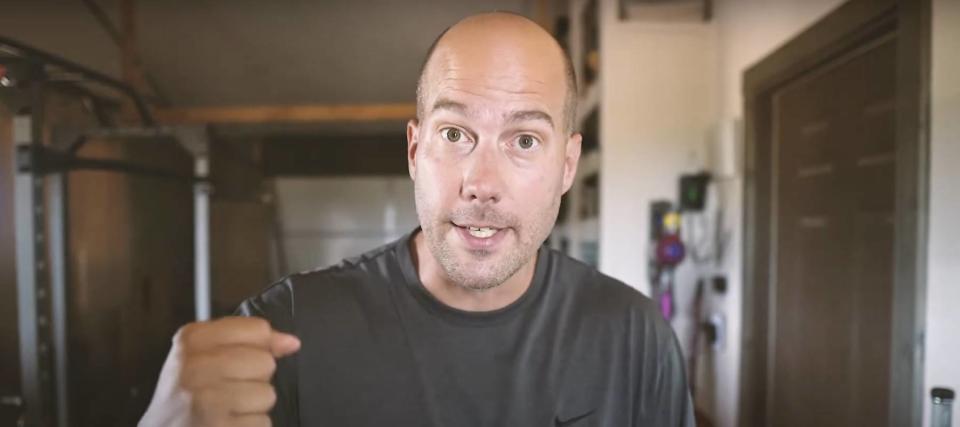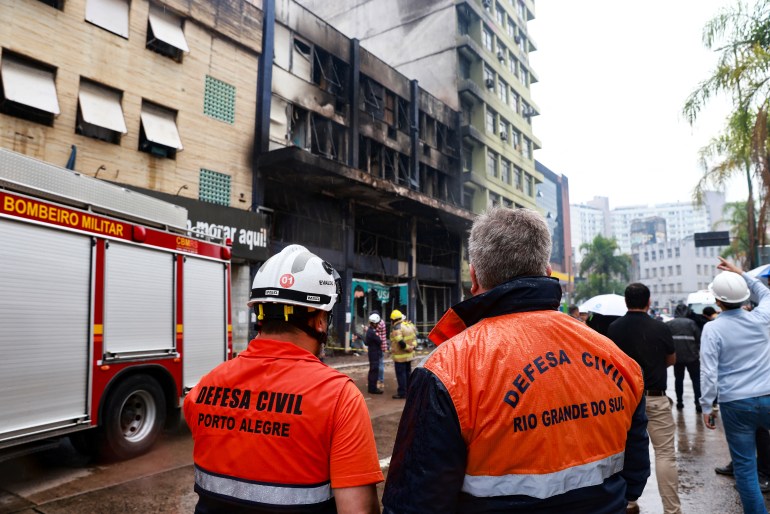Every year, players emerge from relative obscurity to establish themselves as legitimate prospects for their organizations. Now that we are nearly a month into the 2024 minor-league season, it’s a good time to see if we can identify who some of those breakout prospects will be. Below are 20 players who weren’t ranked among their organization’s top-10 prospects at the start of the season but are off to notable starts, beginning with a left-hander in the Guardians organization who has earned a significant online following with a strong April.
(Note: Players are listed in no particular order. The information in the parentheses indicates where they were ranked, if applicable, on their organization’s top-20 list coming into the season. Players from the following organizations are included in this article: Guardians, Mets, Phillies, Brewers, Rays, A’s, Giants, White Sox, Rockies, Cubs, Dodgers, Rangers, Orioles, Diamondbacks, Red Sox and Nationals.)
Matt Wilkinson, LHP, Cleveland Guardians (not ranked): Wilkinson is a 6-foot-1, 270-pound left-hander from British Columbia who went to Central Arizona Junior College and has the nickname “Tugboat.” Even if Wilkinson wasn’t pitching like a young Clayton Kershaw, we probably should have been talking about him, but the fact that he is dominating in historic fashion makes him the perfect person to kick off this piece.
Wilkinson was Cleveland’s 10th-round pick last year out of Central Arizona, where he had a 1.38 ERA and struck out 221 batters in 137 innings over two seasons. He threw only one inning in his pro debut last year, so this is the first we are really getting to see Wilkinson in pro ball. The results have been dazzling. On Thursday, he threw six hitless innings for Low-A Lynchburg, striking out 15 of the 19 batters he faced. Lest you think that was a fluky outing, Wilkinson came into that start having allowed just one run in 14 2/3 innings with 24 strikeouts.
Wilkinson arrived in pro ball with an above-average spin rate on his low-90s fastball, which he commands extremely well. He also features a changeup and slider, both of which he can throw for strikes. He turned 21 in December but it may not be much longer before the Guardians see if he can plow through rougher waters in High A.
Jonah Tong, RHP, New York Mets (not ranked): Tong doesn’t have the great nickname, but he’s also a breakout starter originally from Canada. Tong grew up in Ontario, where he played for the Toronto Mets youth baseball program, though he spent his senior high school season at the Georgia Premier Academy in Statesboro, Ga. Tong was a seventh-round pick for New York in 2022. He didn’t debut until 2023 and struggled with command in limited innings, posting a 6.00 ERA in 21 innings with a 38:22 K:BB. It’s been a different story for Tong so far this year. In four outings for Low-A St. Lucie, he’s yet to allow an earned run and has a 36:5 K:BB in 18 2/3 innings.
Tong is a 6-1 right-hander with a slight frame that has filled out some since he turned pro. The 20-year-old has two plus pitches — a curveball with a well-above average spin rate and a four-seam fastball that averages 93 mph and currently is inducing a called strike/whiff rate of 43.7 percent. UPDATE: Tong was promoted to High-A Brooklyn on Monday after this piece was originally published.
Samuel Aldegheri, LHP, Philadelphia Phillies (No. 14): Sticking with the theme of pitchers with great backstories, here’s Aldegheri, a native of Verona, Italy, whose pitching has been anything but tragic so far this season. Like Tong, he’s yet to allow an earned run. On Thursday, he nearly threw “a Tugboat,” tossing five one-hit innings, striking out 10. In 15 1/3 innings for High-A Jersey Shore, Aldegheri has allowed five hits and four walks, and he’s struck out 21.
An international amateur signing in 2019, Aldegheri has been brought along carefully by the Phillies. Now 22, the 6-1 southpaw can hit the mid-90s with his fastball and he has a good changeup and slider to go along with a developing curveball. He’s aiming to be the first native of Italy to make the big leagues.
GO DEEPER
The pitching paisan: Sam Aldegheri, a Phillies prospect from Italy, dreams of MLB
George Klassen, RHP, Philadelphia Phillies (not ranked): Klassen isn’t from Canada but he did pitch collegiately at Minnesota, so he knows his way around a snowstorm. He didn’t have a particularly impressive career with the Golden Gophers statistically, posting a 6.72 ERA in 64 1/3 innings over two seasons. But he had a huge fastball, which was more than enough for the Phillies to take a flier on him in the sixth round last year. He made his pro debut in April and has been spectacular in four starts, not allowing an earned run and striking out 32 while walking only five in 21 innings for Low-A Clearwater. His number of walks is particularly impressive given the control issues that plagued him in college. He went five innings in each of his first three starts with the Threshers and threw six nearly flawless frames on Saturday.
Klassen, 22, is old for his level, but his stuff is big-league quality. He’s averaging 97 mph on his four-seam fastball, 90 on his cut-fastball and 86 on his curveball. He’s also getting a ton of groundballs when hitters have actually been able to put the ball in play. Klassen may ultimately be a reliever, but he has the stuff to be a good one.
Mike Boeve, IF, Milwaukee Brewers (No. 18): The Brewers have one of the top farm systems in baseball, so being underrated in their system is a bit like getting a B in an AP class. That said, at the rate that Boeve is advancing, he could be facing that MLB final exam sooner rather than later. A 2023 second-round pick out of Nebraska-Omaha, Boeve hit .324 in 28 games in his pro debut, though much of that damage was done in Rookie ball. He returned to High-A Wisconsin — where he struggled in a small sample last year — to start this season and played so well in 13 games (.553/.642/.632 in 53 plate appearances) he’s already been promoted to Double A. In seven games, he’s batting .346/.469/.692 for Double-A Biloxi. In 20 total games, he has a .576 on-base percentage.

Boeve with Nebraska-Omaha last spring. (Tyler Tate / Associated Press)
Boeve turns 22 on May 5. The 6-1 left-handed hitter walked 32 times and struck out just five times in 47 games during his junior season at Omaha, and he’s continued to show elite contact skills (18:11 BB:K in 85 PA) this season. He has yet to display much in-game power at any level, something he’ll need to add to his game to be a starter in the big leagues. But the contact skills plus the defensive versatility (he’s played second, third and first) give him a decent floor as a utility player.
Tyler Woessner, RHP, Milwaukee Brewers (not ranked): The Brewers have been a pitching factory of late, and Woessner is yet another promising arm in their system. The right-hander hails from the same junior college as Wilkinson but had a bit of an unusual journey to pro ball, playing four seasons at Central Arizona rather than the typical two. He did enough in his fourth season to draw the Brewers’ interest, going in the sixth round of the 2022 draft. His first full season in 2023 was solid (4.02 ERA in 121 High-A innings), but he’s really stood out so far this year in Double A. In four starts, he has a 2.66 ERA and a 29:4 K:BB in 20 1/3 innings.
Because he was 22 when he signed, Woessner is old for Double A, but he can run his fastball up to 99 mph and has three solid secondaries (slider, sinker, changeup). He’s demonstrated the ability to throw a lot of innings. His command has taken a big step forward so far this season. If he can maintain those improvements, he could potentially stick as a back-end starter. Otherwise, his arm strength gives him a decent floor as an MLB reliever.
Carson Palmquist, LHP, Colorado Rockies (of note): It may be bleak in Denver this season, but the Rockies’ farm system has several good stories playing out right now, including the continued development of Palmquist, a 6-3 left-hander they drafted in the third round in 2022 out of Miami. After a solid first full season in 2023 (3.90 ERA and 134 strikeouts in 92 1/3 innings, mostly in High A), Palmquist has been dominant to start the year with Double-A Hartford. In four starts, he has a 1.23 ERA and a 32:9 K:BB in 22 innings.
Command has always been a weak spot for Palmquist, and his 3.7 BB/9 this year is in-line with last season. But he does a great job missing bats, thanks in part to a funky sidearm delivery. His fastball sits in the low 90s and he changes speeds well with a high-70s slider. Like Klassen, he may be a future reliever, but he has a big-league ceiling.
Jared Karros, RHP, Los Angeles Dodgers (not ranked): Jared may currently be known nationally as Eric Karros’ son, but he’s been making a name for himself in the Dodgers’ system. A 16th-round pick in 2022 out of UCLA, Karros spent most of last season in Low A but finished the year with three impressive outings for High-A Great Lakes. He’s picked up where he left off last year with the Loons, posting a 2.70 ERA in 20 innings with a 25:2 K:BB.
Karros isn’t overpowering (sits in the low-90s), but he gets good extension with his 6-7 frame and he pairs his fastball with a big 12-6 curveball. His command and control are both above-average, giving him a chance to be a backend starter in the big leagues. Karros, 23, is likely to get a test in Double A by midseason.
Will Simpson, 1B, Oakland A’s (not ranked): Simpson had two things working against him when he was selected in the 15th round out of Washington by the A’s last July — he was a first base-only prospect and he was a four-year college player. Players with that profile have to hit — and hit a lot — to remain in a farm system, let alone establish themselves as prospects. Thus far, Simpson has more than held up his end of the bargain. After a short stint in Rookie ball last year, Simpson batted .322/.373/.522 with four homers in 29 games in Low A. So far in High A, he’s outperforming that line, with a .375/.512/.594 slash line in 19 games.
Simpson’s stat line has been backed by good underlying data, as well. He’s hit the ball as hard as any A’s prospect since he signed and he’s demonstrated a consistent ability to work deep counts and get on base. He’ll need to cut down on the strikeouts, but Simpson, 22, has the power, hit tool and plate discipline to be an asset at first base. Of note: He made his professional debut at third base this weekend, though his future still likely points to first base. But the added versatility could accelerate his path to the big leagues, much as it did for a similar A’s corner infield prospect, Ryon Healy, last decade.
Brooks Baldwin, IF, Chicago White Sox (not ranked): The White Sox are a mess, but there is some hope on the horizon in their minor-league system. Baldwin isn’t one of their better-known prospects, but the switch-hitting infielder is off to a start so hot it’s impossible to ignore. A 15th-round pick by the Giants in 2021, Baldwin returned to UNC-Wilmington for his senior year and improved his draft position by three rounds. He had a nondescript pro debut in 2022, but rebounded with a solid season in 2023, hitting .269/.349/.460 in 93 games split between two A-ball levels. This season in Double A, he’s been Ted Williams, with a .425/.475/.589 line in 19 games. He’s upped his walk rate and cut his strikeout rate from last season. The home run power he showed last season hasn’t emerged yet but he already has nine doubles.
Baldwin doesn’t have any standout tools, but he has good contact skills, some power and is a switch-hitter who can play all over the field, including shortstop and center field. It wouldn’t be out of the question for him to reach Chicago this summer.
Quinn McDaniel, 2B/CF, San Francisco Giants (not ranked): McDaniel went to the Giants in the fifth round of the 2023 draft after a three-year career at Maine where he hit .319 and walked 108 times in 143 games. He made a strong first impression last season, walking 28 times in 29 games and posting a .424 OBP with six homers. McDaniel, 21, is playing for High-A Eugene this season and has gotten off to an impressive start despite playing in a league (Northwest League) that has typically proved difficult for hitters during the spring. In 16 games, he’s batting .345/.480/.448 with a 16:19 BB:K. McDaniel hasn’t hit for much power yet, but he’s been a terror on the basepaths, swiping 13 in 16 chances.
McDaniel strikes out a bit more than you’d like to see from a player who doesn’t have plus power, but his ability to work the count is outstanding and the speed is well above average. He can play in the dirt and in center field. McDaniel is similar to current Giants infielder Tyler Fitzgerald, though with less power and better plate discipline.
Diego Velasquez, SS/2B, San Francisco Giants (of note): Velasquez has been overshadowed in the Giants’ system by several more well-known middle infield prospects, but few have performed as consistently as he has the past two seasons. Last year, at age 19, Velasquez was named the Low-A San Jose team MVP after he hit .298/.387/.434 with eight homers and 23 stolen bases in 111 games. He jumped to High A this season and is batting .309/.407/.412 in 19 games with five stolen bases and a 10:15 BB:K.
Velasquez, now 20, doesn’t have any loud tools, but he’s a well-rounded player whose value becomes more apparent the longer you watch him play. He’s a better second baseman than shortstop but can handle both and could probably fill in at third in a pinch. He has average foot speed but is a smart runner and he handles the bat well. There is potential for more power as he fills out his 6-1 frame.
Trevor Martin, RHP, Tampa Bay Rays (No. 14): The Rays seemingly grow good pitching out of thin air, and they may have another gem in Martin. A 2022 third-round pick out of Oklahoma State, Martin spent all of last season in Low A, where he had a 3.52 ERA in 110 innings with 131 strikeouts. Martin mostly came out of the bullpen at OSU, so it was an impressive debut in the rotation. He did a particularly good job avoiding the long ball, allowing the same number of homers (11) in those 110 innings as he did in 47 1/3 innings during his junior season.
This year, he’s been outstanding in High A. In five starts for Bowling Green, the 6-4 right-hander has a 3.76 ERA and a 32:4 K:BB in 26 1/3 innings. He’s allowed four homers, the only blemish on an otherwise outstanding start. Martin’s fastball sits mid-90s, gets above-average spin and he commands it well, and he has three potentially usable secondary offerings, including an above-average slider.
Dane Acker, RHP, Texas Rangers (not ranked): It hasn’t been the easiest road for Acker, a fourth-round pick by the A’s in 2020 who was traded to Texas (along with Jonah Heim for Elvis Andrus — yikes) before ever throwing a professional pitch. Acker made only two appearances in 2021 before injuring his elbow and having Tommy John surgery. His 2023 season was his first mostly healthy pro campaign, and he was impressive, posting a 2.54 ERA in 67 1/3 innings, with two-thirds of those innings coming in Double A. Acker is back in Double A this season and has been nearly unhittable in four starts. He has a 1.47 ERA and a 26:6 K:BB in 18 1/3 innings. He set season-highs on Friday with five innings and eight strikeouts in a win over Amarillo.
Acker is already 25 thanks to the missed time with injuries and the pandemic, but his stuff is special. He can touch 99 mph with the fastball and gets significant vertical movement with the pitch. He also has an above-average changeup and a curveball.
Pablo Aliendo, C, Chicago Cubs (not ranked): Catchers who can hit and play defense are a rare breed, but the Cubs might have one in Aliendo. A native of Venezuela, Aliendo played all of last season in Double A, hitting .231/.332/.458 with a career-high 16 homers. He’s repeating the level to start this year, and is off to a strong start with a .250/.346/.591 line and four homers in 14 games.
Aliendo will turn 23 in late May. He’s shown consistent improvement, both offensively and defensively, every year he’s been in pro ball. Offensively, his power is his best tool. Defensively, he has quick feet, the ability to frame pitches and a strong arm.
Gavin Conticello, 1B/RF, Arizona Diamondbacks (not ranked): The Diamondbacks took Conticello in the eighth round of the 2021 draft out of Stoneman Douglas High in Florida. He came to pro ball as a corner infielder and split time his first two seasons between third base and first base. This year, he’s playing first base and right field, which is a good indication of what kind of hitter the Diamondbacks expect him to be. He showed some of that power last season, when he cranked a career-high 17 homers in 110 games, mostly with Low-A Visalia. This year, he’s off to a fast start with High-A Hillsboro, with a .338/.424/.527 line and four homers in 20 games.
Conticello’s calling card is that power. He has good bat speed and he can use the whole field. Defensively, he didn’t have the footwork to stay at third, but he has a strong arm and is an average runner, so he should be able to stick at first base or in right field.
Creed Willems, C, Baltimore Orioles (not ranked): It isn’t easy being green or a catching prospect in a stacked Orioles system, but Willems could be a solid trade chip for Baltimore with the way he’s playing so far this season. Also drafted in the 2021 eighth round out of high school, the Aledo (Texas) High alum has moved up gradually through the Orioles’ system. He reached High A last season but struggled, hitting .192 in 75 games. He returned to Aberdeen this season and has looked like a different hitter, with a .297/.338/.641 line in 17 games.
The left-handed hitting Willems has plenty of power in his stocky, 5-11 frame, and he already has six home runs this season. High school catchers have a steep learning curve when they turn pro, and he’s had to work to improve his conditioning and his preparedness behind the plate. He’s shown a lot of growth in both areas.
Phillip Glasser, IF, Washington Nationals (not ranked): Glasser was already 23 when the Nationals took him in the 10th round out of Indiana last July, so from the start, he would need to be on a relatively fast path to be considered a true prospect. He’d also need to perform. So far, so good on both accounts for Glasser, who began the season in Low A but after 15 games and a .381/.444/.587 line (which included one game where he had four hits, four RBIs and three steals, something that has only been done in the minor leagues three other times), he earned a promotion to High A on Saturday. He’s reached base three times in his first two High-A games and has doubled twice.
The left-handed hitting infielder has outstanding bat control and is an excellent base runner. He can play all over the infield. If he continues to hit like he has thus far, he’s in-line for another promotion soon.
Gavin Dugas, IF, Washington Nationals (not ranked): Like Glasser, Dugas was a senior signing in last year’s draft (sixth round out of LSU) and he also began this season in Low A. The 23-year-old has been red-hot, hitting .356/.457/.492 in 15 games. Dugas is a hard-nosed player who holds the LSU career record for being hit by a pitch (68). That carried over into his pro debut last season, when he was hit 10 times in just 71 plate appearances. He’s been hit only twice this season, instead doing the hitting with his bat, proving that he has more than one way of reaching base safely.
Dugas doesn’t have a lot of power and is limited to second base and left field, so he’ll need to hit for a high average and get on base to make an impact, but he’s done that so far this year.
Matthew Lugo, UT, Boston Red Sox (of note): This has been a bit of a comeback year for Lugo, who came into last season with some helium but struggled in Double A, posting a .297 OBP in 83 games. The nephew of Carlos Beltrán returned to Double A this season and has looked a lot more like the player scouts were excited about in 2022. In 14 games for Portland, Lugo has a .313/.411/.792 line and has already matched his season home run total for all of 2023 (five).
Lugo began his career as an infielder but has played mostly left field this season behind a star-studded Portland infield that includes Marcelo Mayer, Nick Yorke and Eddinson Paulino. Lugo will need to hit for more power to bring a lot of value in left field, but he hit 18 homers in 2022 and is swinging with authority this year. He’s an excellent athlete who could settle into a utility role as he moves up the ladder as well.
(Top photo of Matt Wilkinson courtesy of Gary Streiffer / Lynchburg Hillcats)
Adblock test (Why?)
Twenty underrated MLB prospects off to fast starts - The Athletic
Read More







:max_bytes(150000):strip_icc()/GettyImages-1325650425-6bbf3f01daf449a682c5f8b3a2361641.jpg)


